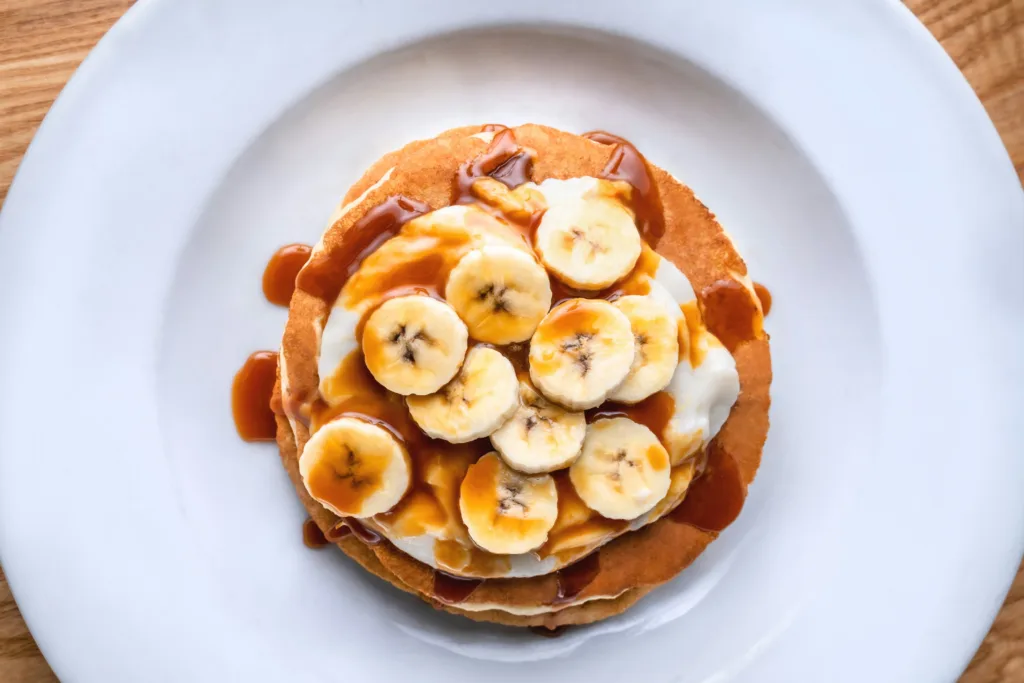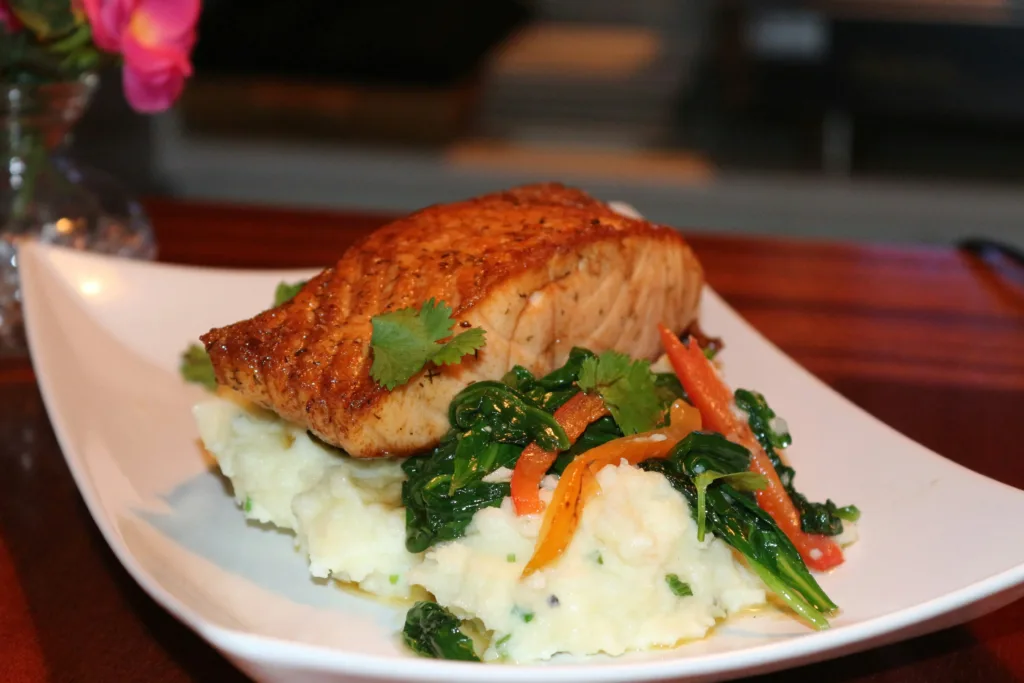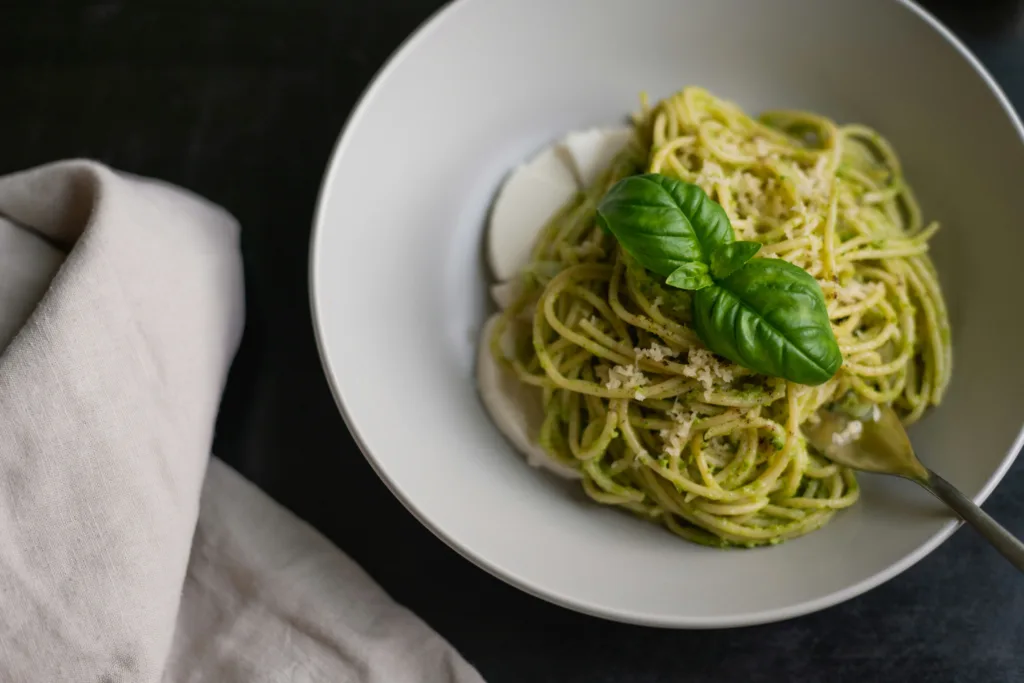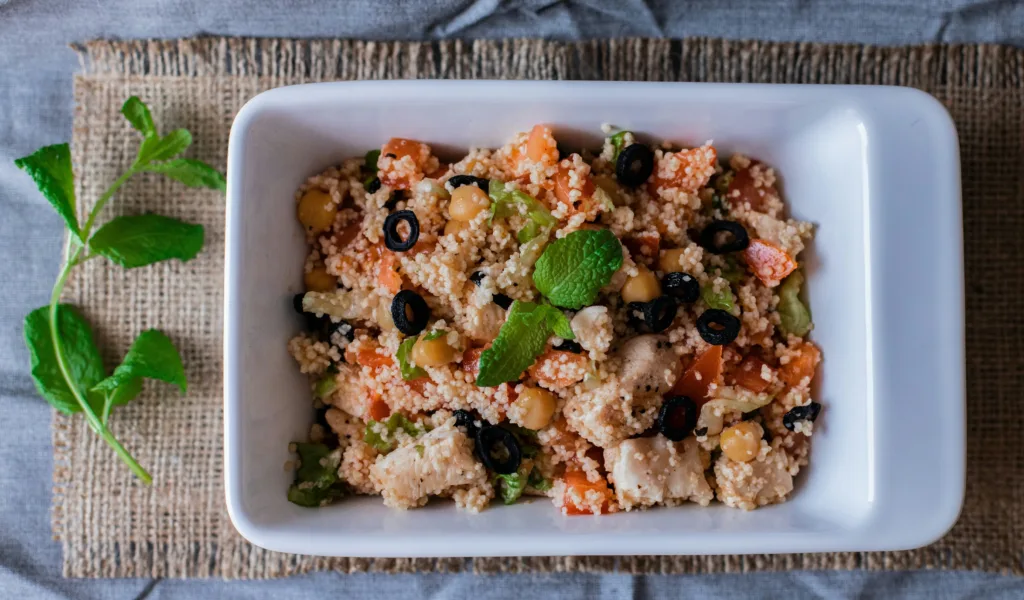If you’ve ever Googled “1400 calorie meal plan” and found yourself staring at a list of meals you’d never eat in a million years, you’re not alone. Most of those plans are either too complicated, too bland, or just flat-out unrealistic. They don’t account for busy schedules, actual hunger, or the fact that nobody wants to eat dry chicken and steamed broccoli five days in a row.
This plan is different. It’s built around foods that are simple to make, taste good, and don’t leave you starving an hour later. It’s designed for real people with real lives who want to eat a bit better without turning every meal into a project. Whether you’re here to lose weight, feel more in control of your eating, or just need a reset, this 1400 calorie meal plan gives you structure without stress.
Following a structured eating plan, whether it’s 1400 calories or something else, only works if it’s easy to organize and actually stick with. Here, our app ReciMe can help by letting you save recipes from Instagram, TikTok, YouTube, and other places people really get ideas from. You can sort meals by type, tag them by diet, calculate nutrition info like calories and macros, and build out your whole week with drag-and-drop meal planning. The app also creates grocery lists grouped by aisle or recipe, so you’re not wandering back and forth at the store. Whether you’re trying to stay on track with your calorie intake or just reduce the mental load of cooking, ReciMe’s tools are here to simplify the process. Available on iOS, Android, and as a Chrome Extension, so everything stays synced no matter where you’re planning or cooking.


Why 1400 Calories Hits the Right Balance
Ever wonder why 1400 calories shows up so often in meal plans? It’s because it hits that tricky middle ground: low enough to help many adults lose weight, but not so low that you’re running on fumes. You can still eat full meals, fit in a snack or two, and feel satisfied, without going overboard on calories.
That said, it’s definitely not a universal number. Your ideal intake depends on things like your size, daily activity, and personal goals. For some, 1400 calories might be a helpful short-term structure. For others, it could be part of a longer routine. Either way, if you plan to follow it for more than a couple of weeks, it’s smart to check in with a doctor or dietitian to make sure it fits your needs.

How to Make 1400 Calories Actually Work
Here’s the truth: 1400 calories isn’t a lot. So every bite counts. If you want this to work without constant hunger or boredom, a few things matter:
- Prioritize protein: It fills you up and helps protect muscle
- Use fiber-rich foods: Think beans, veggies, and whole grains
- Don’t fear healthy fats: Avocado, olive oil, nuts, and seeds add satisfaction
- Keep meals balanced: Combine protein, fiber, and healthy fat in each meal
- Plan for leftovers: Save time and brainpower
This plan is structured to do all of that without making you feel like you’re stuck in a diet rut.
Sample 7-Day 1400 Calorie Meal Plan
Let’s get into the meat of it. Below is a full week’s worth of meals. Each day includes breakfast, lunch, dinner, and one to two snack options. Portions and ingredients were loosely guided by expert-developed plans but adapted to fit real-world schedules and tastes.
Day 1
Breakfast – Avocado Egg Pita with Blueberries
Toast a whole grain pita until lightly crisp, then fill it with mashed avocado and two sliced hard-boiled eggs. Add a pinch of salt and pepper, and enjoy with half a cup of fresh blueberries on the side.
Lunch – Chicken Quinoa Bowl
Cook quinoa and top it with sliced grilled chicken breast, a handful of arugula, chopped olives, and a sprinkle of fresh herbs. Serve warm or cold, depending on what your day looks like.
Snack – Apple and Nut Butter with Pistachios
Slice a small apple and dip into 1 tablespoon of almond butter for a sweet-salty combo. Add a small handful (about 1 oz) of pistachios for crunch and extra staying power.
Dinner – Instant Pot Chicken Soup
Pressure cook chopped chicken breast with carrots, celery, garlic, and onion in a light broth. Season with herbs like thyme and parsley. It’s warm, comforting, and takes less than 30 minutes to make.
Day 2
Breakfast – Overnight Oats with Banana and Nuts
Combine old-fashioned oats with almond milk, a few chopped walnuts, pumpkin seeds, and a pinch of cinnamon. Let it soak overnight. In the morning, top with a chopped banana and stir to combine.
Lunch – Roasted Chickpea and Chicken Bowl
Toss chickpeas, cherry tomatoes, and chunks of chicken breast in olive oil and roast until golden. Serve over greens or grains with a squeeze of lemon or a light vinaigrette.
Snack – Yogurt and Fruit with Cheese
Spoon half a cup of plain Greek yogurt into a bowl and top with berries. Pair with a piece of string cheese and half a sliced pear for a mix of sweet and savory.
Dinner – Baked Salmon with Roasted Veggies
Bake two small salmon fillets at 400°F with green beans, halved baby potatoes, and red onion. Drizzle with olive oil and roast until everything is tender and the salmon flakes easily with a fork.

Day 3
Breakfast – Almond Butter Toast with Fruit
Toast two slices of whole grain bread and spread with almond butter and a thin layer of 100% fruit jam. Sprinkle with pumpkin seeds and enjoy with a side of fresh berries.
Lunch – Salmon Niçoise Salad
Use leftover salmon from dinner and toss it into a salad with hard-boiled egg, cooked green beans, olives, and halved baby potatoes. Dress with a simple olive oil and lemon dressing.
Snack – Egg, Chocolate, and Berries
Have one hard-boiled egg with a couple squares of dark chocolate and a small bowl of blueberries. It’s a weird trio that actually works.
Dinner – Sheet Pan Roasted Chicken and Veggies
Roast a seasoned chicken breast on a pan surrounded by acorn squash slices, fennel wedges, and onion. Everything gets crisp and caramelized in the oven with barely any cleanup.
Day 4
Breakfast – Egg and Avocado Pita with Blueberries
Stuff a toasted pita with mashed avocado and chopped hard-boiled egg. Add some chili flakes if you like heat. Serve with a small side of blueberries for balance.
Lunch – Quinoa and Bean Bowl
Mix cooked quinoa with black beans, chopped cherry tomatoes, and torn basil. Drizzle with lemon juice and olive oil. It’s light but filling, especially with a bit of grated cheese on top.
Snack – Hummus Plate with Apple
Scoop a few tablespoons of hummus onto a plate and serve with raw veggie sticks like carrots, cucumber, and bell pepper. Add one small apple with peanut butter for a sweet follow-up.
Dinner – One-Pot Spaghetti with Tomatoes
Simmer spaghetti in a single pot with cherry tomatoes, garlic, a dash of lemon zest, and vegetable broth until cooked. Stir in fresh herbs like basil or parsley before serving.
Day 5
Breakfast – Overnight Oats with Banana and Walnuts
Prep a jar of oats with milk, banana slices, and chopped walnuts the night before. By morning, it’s creamy and ready to eat. Add cinnamon for a cozy twist.
Lunch – Herbed Shrimp and Avocado Salad
Sauté shrimp with lemon and garlic, then toss with creamy avocado slices and a mix of baby greens. Add a few chopped herbs or microgreens for extra flavor.
Snack – Cheese, Pear, and Yogurt
Pair a piece of string cheese with sliced pear. Later, have a small bowl of plain yogurt with fresh berries and a spoonful of almond butter stirred in.
Dinner – Pinto Bean and Poblano Soup
Cook pinto beans with fire-roasted poblano peppers, onion, garlic, and spices. Serve with a scoop of brown rice and top with sliced avocado and lime juice.
Day 6
Breakfast – Cereal with Milk and Berries
Pour a bowl of all-bran cereal and top with cold skim milk and a few raspberries. Not fancy, but it does the job.
Lunch – Soup and Toast Combo
Use leftover cabbage soup and pair it with a slice of whole grain toast topped with mashed avocado and seasoning. Add red pepper flakes if you like a bit of heat.
Snack – Apple with Cheese and Almonds
Have a small apple with a slice of cheddar cheese and a handful of almonds. It hits all the marks: crisp, creamy, and crunchy.
Dinner – Hummus-Crusted Chicken with Broccoli
Coat a chicken breast in a layer of hummus, then bake it in the oven. Serve with roasted broccoli tossed in lemon and olive oil.
Day 7
Breakfast – Banana Pancakes with Berries and Peanut Butter
Mash one banana and mix with two eggs to make quick pancakes. Cook in a nonstick pan and top with raspberries and a drizzle of peanut butter.
Lunch – Leftover Soup and Toast with Avocado
Reheat your soup from earlier in the week and enjoy it with a slice of whole grain toast topped with avocado and sea salt.
Snack – Egg and Chocolate Chips
Snack on a hard-boiled egg with a pinch of salt and a spoonful of dark chocolate chips. Strange but satisfying.
Dinner – Taco-Stuffed Zucchini
Hollow out zucchini halves and fill them with seasoned ground turkey or beef, then bake until tender. Top with pico de gallo or salsa just before serving.

Tips to Make Your Meal Plan Stick
Let’s be real: it’s easy to plan something. Sticking to it is where most of us struggle. Here’s what actually helps:
- Prep ahead: Even cutting veggies or cooking a batch of grains makes the week easier
- Repeat meals: If you find a combo you love, there’s no shame in eating it again
- Use leftovers wisely: Plan meals that build off each other
- Stay flexible: If you’re hungrier one day, add a small snack or boost a portion
And most importantly, don’t turn this into a perfection contest. One imperfect day isn’t a failure. It’s just a day.
Is 1400 Calories Enough for Everyone?
Short answer: no. For some, it’s a manageable short-term goal. For others, it’s way too low. It depends on your size, activity level, metabolism, and whether you’re nursing, pregnant, or managing certain conditions. That’s why most experts suggest using plans like this as a general guide, not a lifelong rulebook.
Also, if you’re dealing with fatigue, mood swings, or feel constantly hungry, it might be a sign that you need more food or a more balanced approach. Food should support your life, not drain it.

Foods That Work Best in a 1400 Calorie Plan
These foods offer a good balance of calories, nutrients, and satisfaction:
- Lean protein: chicken, turkey, shrimp, salmon, eggs, tofu
- High-fiber carbs: oats, quinoa, beans, lentils, brown rice
- Veggies: leafy greens, tomatoes, squash, onion, bell peppers
- Fruit: berries, apples, bananas, pears
- Healthy fats: nuts, seeds, olive oil, avocado
- Extras: hummus, Greek yogurt, dark chocolate, spices
The key isn’t cutting everything out. It’s choosing ingredients that give back more than just empty calories.
Conclusion
At the end of the day, a 1400 calorie meal plan isn’t about perfection or sticking to a rigid script. It’s just a framework to help you stay on track without losing your mind. It’s low enough to create structure, but not so strict that you’re left hungry and frustrated. With the right meals and a little prep, it’s totally doable, even if you’ve never been someone who plans ahead or counts anything.
Whether you’re testing this out for a week, easing back into a routine, or simply trying to feel more in control of your food choices, the goal is to make eating easier, not harder. Keep what works. Change what doesn’t. And if your week includes a spontaneous dinner out or an extra snack, that’s real life. Not a failure. You can pick right back up the next day and keep going. That’s the point.
FAQs
Can I follow a 1400 calorie meal plan long term?
That depends. Some people use this calorie level for a short reset, others might stay there a little longer. But it’s not the right number for everyone. If you’re feeling tired, constantly hungry, or not getting the nutrients you need, it’s probably time to adjust. Talking to a dietitian is never a bad idea if you’re unsure.
Will I lose weight on 1400 calories a day?
Maybe. If 1400 calories is less than your body needs to maintain its current weight, then yes, it can lead to weight loss. But everyone’s calorie needs are different, and things like muscle mass, activity level, and hormones play a role too. It’s not a guaranteed formula.
What if I’m hungry all the time?
That’s a sign your body might need more food, or more balanced meals. Make sure you’re eating enough protein, fiber, and healthy fat. And don’t be afraid to slightly increase your portions or add an extra snack. A good plan should leave you satisfied, not struggling.
Can I repeat meals during the week?
Absolutely. If something’s easy to prep and you like it, go ahead and make it more than once. That’s not lazy – it’s smart. Repeating meals helps save time, ingredients, and mental energy.
Do I have to count every single calorie?
Not unless that works for you. You can use this plan as a loose guide without getting too deep into the numbers. Some people like using tools or apps to track everything, others just follow meal ideas and portion sizes. Either way is valid.
What if 1400 calories isn’t enough for my activity level?
Then it probably isn’t. If you’re working out a lot or have a physically demanding routine, you may need more fuel. The plan should support your lifestyle, not drain your energy. It’s okay to increase your intake and still eat mindfully.
How do I know if this is working for me?
Pay attention to how you feel. Are you energized? Full after meals? Sleeping well? These things matter just as much as what the scale says. A meal plan that works should fit into your life, not take it over.
